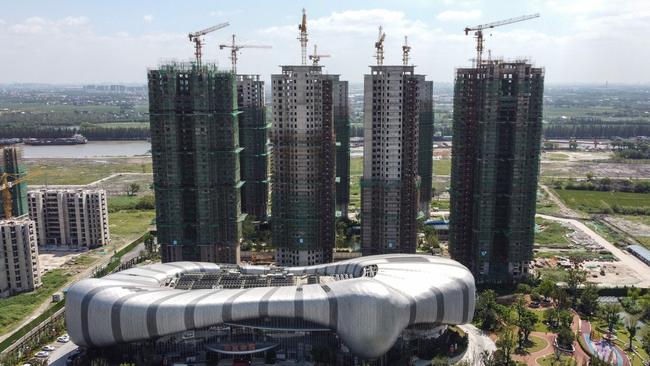
Put aside my comparison of the Australia and China Covid numbers; do you really think that China has had fewer Covid cases than Cyprus, population just over one million?
Or that China has had barely half the Covid cases of Norway, population 5 million?
This bigger point is the impossibility of really knowing what is going on, much more broadly and granularly, inside China, beyond the glitzy images of very fast train networks, those spectacular freeways, all those high-rise cities and seemingly pervasive conspicuous consumption.

That, in a sense, trying to bring it all together in a simple digestible projection, we should see Shanghai as just a more northern version of Hong Kong or Singapore.
The tragic part is, of course, that Hong Kong is well on the way to becoming – to being brutally forced to becoming - a southern version of Shanghai . But that’s outside the scope of my comment today.
So-called experts who claim to “know about China” are the 21st century versions of the dupes – journalists and academics and celebrities – who told us in the 1920s and the 1930s that the Soviet Union was a workers paradise, just when it was killing millions of them and half-starving tens of millions.
No, I’m not suggesting that all that sort of thing is being replayed in China now. The lack of knowledge goes to really knowing what drives decisions and events and the interplay between different power centres, on complex levels where bureaucracy, the party and business intersect.
A big part of the delusion of seeming understanding comes from the pervasive interfaces we now have across China with both operational businesses – all that ‘stuff’ made there, and the raw materials bought to make it, most prominently in our case of course, iron ore –and the financial sector.

So we get an Evergrande, one of China’s biggest property developers, that was created by the force-fed building of China’s ‘ghost cities, and is now utterly insolvent in conventional western terms.
Is it China’s Lehman – the collapse that triggered the GFC?
It’s impossible to know; just as it’s impossible to know why it’s really happening, and indeed as yet if it actually will happen.
Just as it is impossible to know why exactly Chairman Xi seemingly cracked down on the – some of the? – billionaires; most prominently Alibaba’s Jack Ma, who is now ‘back’ after apparently paying a ‘fine’ running into the billions.
The same advice applies to ‘events’ like Evergrande as it does to ‘statistics’ – whether for Covid or GDP. Don’t believe the number, trust only the reality.
If China’s buying less iron ore from us and the price plunges; don’t try to ‘know’ why – the belief that you can get to ‘the answer’ is and always is a delusion - just deal with the reality.
Maybe Evergrande and its supposed $400bn of debts - but who really knows what financial obligation linkages there really are – does formally collapse. Like one of its buildings.
In both cases the only rational course would be to deal with the rubble.
As I wrote earlier in the month, the sudden plunge in the iron ore price was tracking eerily similar to the two previous times that it had rocketed to dizzyingly high levels, both times because of China, in 2008 and 2012.
In both previous cases, it plunged and it plunged suddenly and significantly. Is this plunge from $US230 to $US95, so far, significant enough? I don’t know and believing you can know is a delusion – even before you get to the broader questions about the “China miracle”.







There’s a bigger and far more important point about the utter unbelievability of Chinese statistics, projected most graphically in the obvious fantasy of their minuscule Covid numbers, than simply that they lie statistically for some purpose.